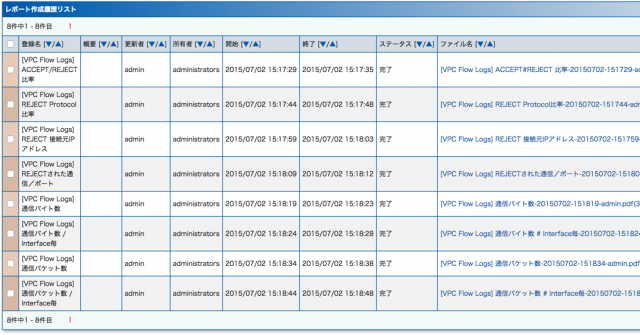

Phase 6: Validating Your Splunk Cloud Platform Deployment.Phase 5: Migrating to the Splunk Cloud Platform.Phase 4: Preparing for Splunk Cloud Platform migration.Phase 3: Determining your readiness for Splunk Cloud Platform migration.Phase 2: Getting started with your Splunk Cloud Platform migration.Phase 1: Splunk Cloud Platform migration overview.Getting started with the Splunk App for Ethereum.

Getting started with Splunk Connect for Ethereum.

#VPC FLOW LOGS WINDOWS#
#VPC FLOW LOGS LICENSE#
#VPC FLOW LOGS UPGRADE#
Preparing your Splunk Enterprise instance to upgrade to jQuery 3.5.Merging common values from separate fields.Improving event distribution in Splunk Enterprise.Improving data pipeline processing in Splunk Enterprise.Following best practices for working with dashboards.Alerting on source type volume with machine learning.Updating deprecated HTML dashboards in Splunk Cloud Platform.Reviewing data buckets retrieved during restore job.Reducing skipped searches in Splunk Cloud Platform.Preparing your Splunk Cloud Platform instance to upgrade to jQuery 3.5.Optimizing search in Splunk Cloud Platform.Managing configurations in Splunk Cloud Platform.Creating allows lists with the Splunk Cloud Platform Admin Configuration Service API.Adding a heavy forwarder to Splunk Cloud Platform.Managing your Splunk Cloud Platform deployment.Implementing use cases in Cloud Platform.Getting Started with Splunk Data Stream Processor.Extracting insights from Cloud Platform.Create a flow log that publishes toĪfter you have created and configured your Amazon S3 bucket, you can create flow logsįor your network interfaces, subnets, and VPCs.

(ACL) Overview in the Amazon Simple Storage Service User Guide. The log deliveryĪccount has READ and WRITE permissions. Owner, if different from the bucket owner, has no permissions. Owner has FULL_CONTROL permissions on each log file. To manage access to the log files created by a flow log. In addition to the required bucket policies, Amazon S3 uses access control lists (ACLs) In the Amazon CloudWatch Logs User Guide.
#VPC FLOW LOGS UPDATE#
You must update the key policy for your customer managed key so that the log delivery account can write to your S3 bucket.įor more information about the required key policy for use with SSE-KMS, see Amazon S3 bucket server-side encryption If you choose SSE-KMS, you must use a customer managed key. If you choose SSE-S3, no additional configuration is required. Information, see Protecting data using server-side With Amazon S3-Managed Keys (SSE-S3) or Server-Side Encryption with KMS Keys (SSE-KMS). You can protect the data in your Amazon S3 bucket by enabling either Server-Side Encryption Source ARN is the wildcard (*) ARN of the logs service. The source account is the owner of the flow log and the To use the aws:SourceAccount and aws:SourceArn conditionĭeputy problem. Principal instead of individual AWS account ARNs. It is a best practice to grant these permissions to the log delivery service Taken to upload the file to the Amazon S3 bucket.Īrn:aws:s3::: bucket_name/ optional_folder/AWSLogs/aws-account-id= account_id/* Is later than the timestamp in the file name, and differs by the amount of time Indicates the date and time at which the file was uploaded to the Amazon S3 bucket. In Amazon S3, the Last modified field for the flow log file Then it publishes the flow log to the Amazon S3 bucket, and creates a new log Size limit within the 5-minute period, the flow log stops adding flow log records to The maximum file size for a log file is 75 MB. Each logįile contains flow log records for the IP traffic recorded in the previous five Then publishes the log files to the Amazon S3 bucket at 5-minute intervals. VPC Flow Logs collects flow log records, consolidates them into log files, and


 0 kommentar(er)
0 kommentar(er)
